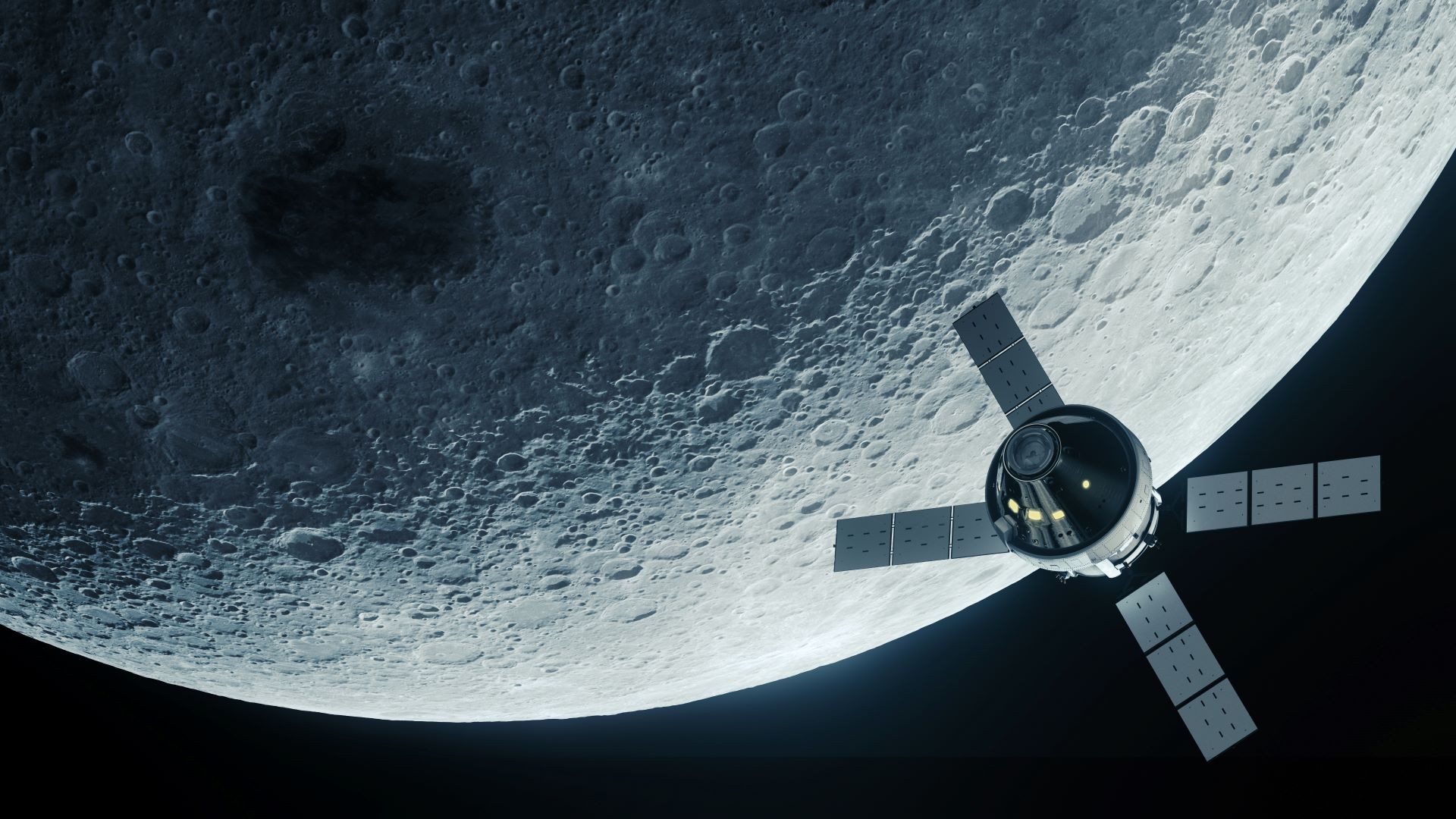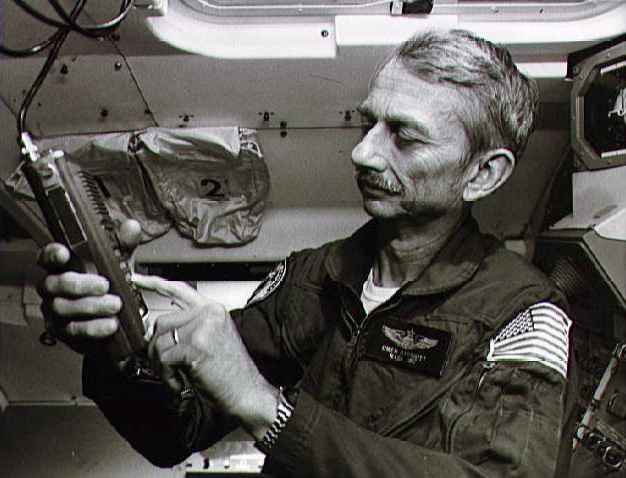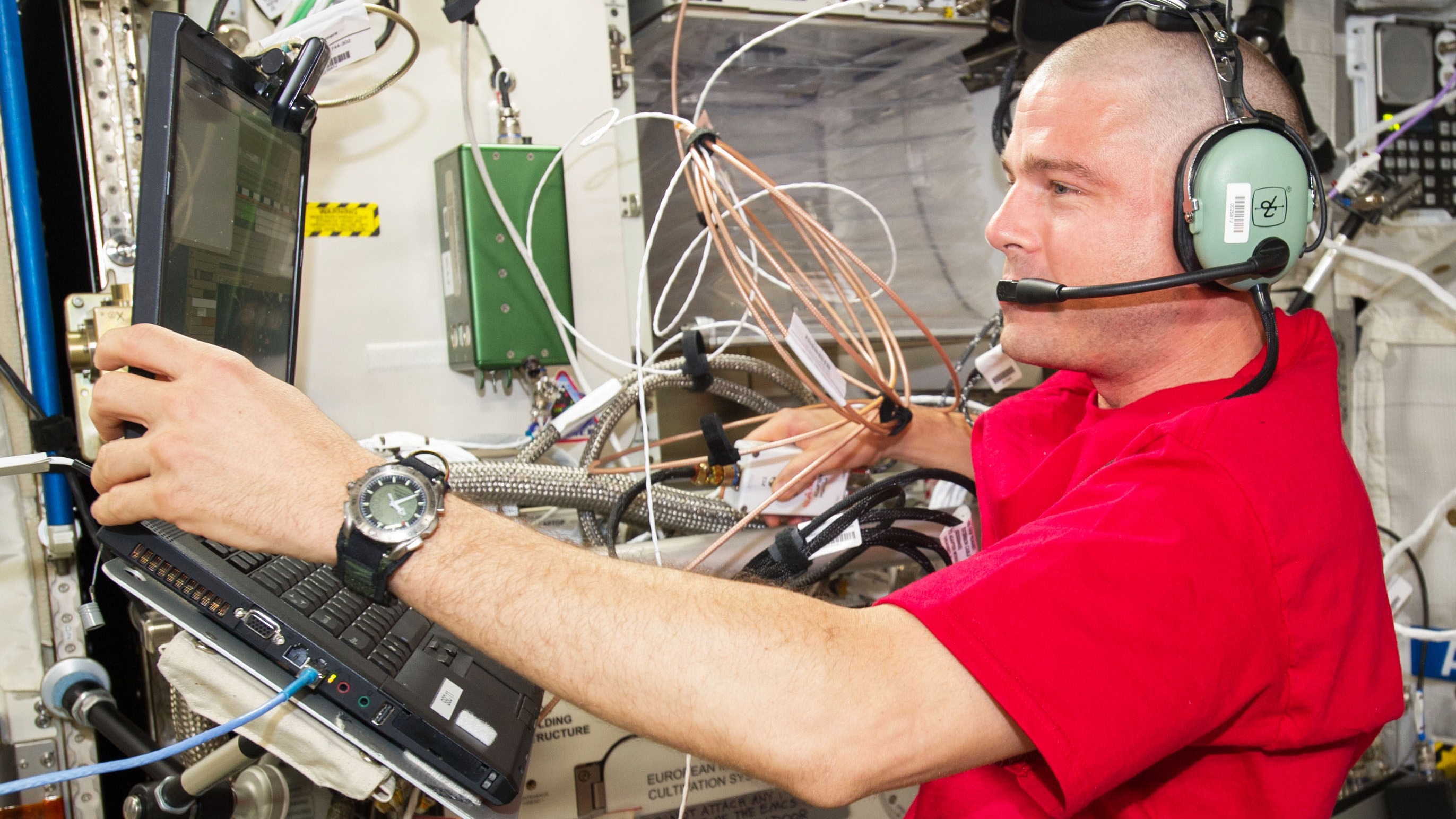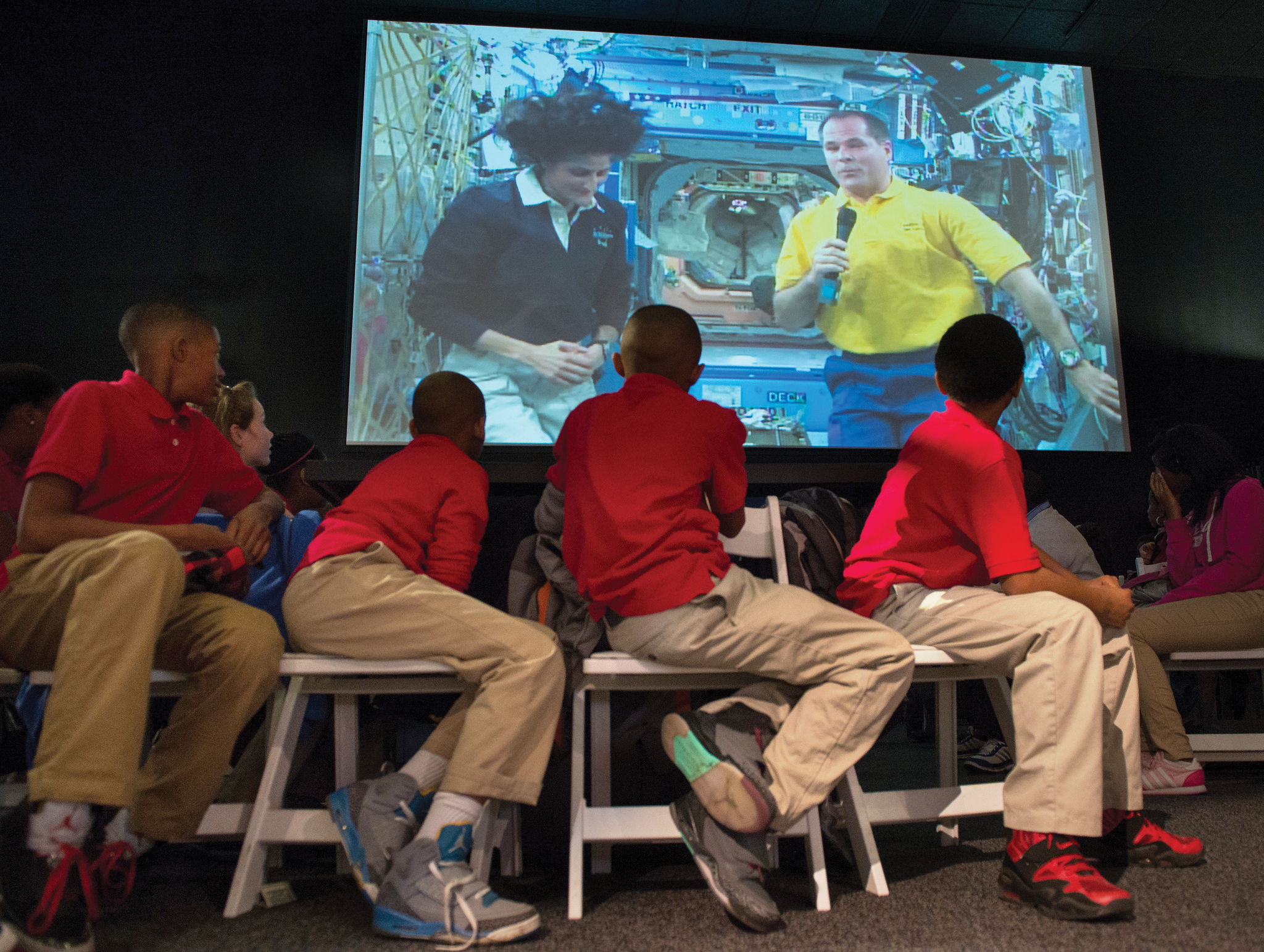
It's been 40 years since the first astronaut called an amateur radio operator on Earth. Now the moon is in the community's sights.
Most of the astronauts aboard the Artemis 2 mission, which will send a quartet of people around the moon in late 2024, are certified ham radio (amateur radio) operators. There's high hopes in the community that the astronauts may call home from deep space, the president of Radio Amateurs of Canada told Space.com.
"We feel it's important that anyone, especially kids as they determine what they want to do with their life, have that opportunity" to talk with astronauts, Phil A. McBride said in a recent interview. After four decades of communication with low Earth orbit, he added, the hope is ham radio will reach further out with the moon.
Related: Four for the moon! NASA names Artemis 2 astronaut crew for 1st lunar mission since Apollo
The first ham radio operator in space was NASA astronaut Owen Garriott (W5LFL), who on Dec. 1, 1983 called Lance Collister (WA1JXN) in Frenchtown, Montana. A ham radio was even aboard the Russian space station Mir, according to NASA, during the shuttle-Mir program that saw NASA astronauts visit the orbiting complex.
Today's ham operators communicate with astronauts through Amateur Radio on the International Space Station (ARISS), largely aiming to let students directly talk with spaceflyers, according to documentation from the group. As of 2022, NASA reports that more than 100 crew members have connected with 250,000 participants on the ground via ARISS.

It's unclear if ham radio equipment will be onboard Artemis 2 as the mission manifest is not yet decided, Space.com confirmed with Chief Astronaut Joe Acaba and two of the crew members (NASA's Reid Wiseman and the Canadian Space Agency's Jeremy Hansen) in interviews last month. In theory, though, the main requirements would be adequate power and storage space for radio equipment, spare time for the crew to devote to the radio during their 10-day mission and a line of sight with Earth.
Three of the four Artemis 2 astronauts are certified hams, however, with call signs for Wiseman (KF5LKT), Hansen (KF5LKU) and NASA astronaut Victor Glover (KI5BKC). The other crew member, NASA astronaut Christina Koch, was studying for a 2019 amateur license exam when her record-setting one-year flight was abruptly rescheduled six months earlier than expected, according to the National Association for Amateur Radio. Koch delayed the certification in favor of completing the mission training for her 328-day sojourn that ended on Feb. 10, 2020.
Related: International Women's Day: Female astronauts keep making strides off Earth

Participating in the ham community requires precious resources: Time to study for the required exams, equipment space to accommodate chatting with others and money to buy said equipment and obtain certification. Costs vary considerably by region. U.S. operators must pay around $35 to get their ham radio license from the Federal Communications Commission, according to Hamtronics.com. Equipment costs can range from $30 handheld devices to more professional units that start at $400 and climb quickly into the thousands.
The community is an international collective that McBride says is quite welcoming of people from all ages, genders, backgrounds and all countries, to the extent that operators will often donate old equipment to those in need. That said, the barriers of cost and time do tend to favor males worldwide; detailed statistics on diversity are not easily available. Diversity and inclusion were the stated priorities of the American Radio Relay League in a December 2022 communique from its CEO, David Minster.

The ham community is starting to think past the apparent conclusion of the ISS program in 2030, to a time when commercial space stations are expected to begin. McBride said conversations are ongoing about bringing hams onto these commercial venues, although the planning for the outposts are still in early stages.
Speaking to his own experience, McBride said ham radio tends to inculcate valuable cross-disciplinary skills in the community. Math skills are a definite must, along with comfort with technology. McBride, 43, said as an example that his interest in ham radio had him studying algebra ahead of his schoolmates around ages 13 and 14.
"It encourages innovation," McBride said of ham radio, which was estimated to have three million participants worldwide in 2015. The previous decade before that, based on U.S. statistics, appeared to show that number is growing.
The current ARISS collaboration involves all the major partners: NASA, the European Space Agency, Roscosmos and the Canadian Space Agency. Artemis will have a similarly international approach for its crews, so presumably, if ham radio is brought on board those missions several countries will be involved.
The astronauts themselves have said how much ham radio means to them. "I get choked up every time I read a report about a ham radio contact," NASA astronaut Sunita Williams said in 2015.
"You go through the questions and it sounds like only 10 kids, then you read a report about how many people were at that event and how much preparation and time the kids took. It is nice to know it makes such a huge impact."
Elizabeth Howell is the co-author of "Why Am I Taller?" (ECW Press, 2022; with Canadian astronaut Dave Williams), a book about space medicine. Follow her on Twitter @howellspace. Follow us on Twitter @Spacedotcom or Facebook.




!["[T]he First and Fifth Amendments Require ICE to Provide Information About the Whereabouts of a Detained Person"](https://images.inkl.com/s3/publisher/cover/212/reason-cover.png?w=600)


